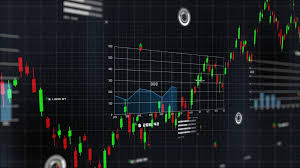
Understanding Trading Automation Crypto: The Future of Digital Trading
In recent years, the world of cryptocurrency trading has seen explosive growth. With this growth, there has been an increasing interest in Trading Automation Crypto, where sophisticated algorithms and automated systems take the lead in executing trades. These systems can analyze market behavior more quickly than humans, providing a competitive edge to traders who leverage them. If you are eager to explore the benefits and inner workings of this innovative approach, Trading Automation Crypto click here to delve deeper into the mechanics behind trading automation.
What is Trading Automation?
Trading automation refers to the use of software programs to execute trades in the financial markets without human intervention. These systems use a set of predetermined rules and algorithms to determine when to buy and sell assets based on various market indicators. In the context of cryptocurrency, this means that traders can automate their investment strategies to take advantage of market volatility, which is particularly pronounced in this asset class.
The Rise of Cryptocurrency Trading
The cryptocurrency market has evolved significantly since the introduction of Bitcoin in 2009. With the growing number of blockchain-based projects and the increasing acceptance of cryptocurrencies in mainstream finance, more traders are entering the scene. As a result, the demand for efficient trading mechanisms has skyrocketed, leading to the rise of trading automation. By automating trading processes, traders can capitalize on price fluctuations without being glued to their screens all day.
How Trading Automation Works
Trading automation involves several key components:
- Trading Algorithms: These are sets of mathematical instructions that determine how trades are executed. They consider various factors such as price movements, volume, and market trends to make informed decisions.
- APIs: Application Programming Interfaces (APIs) allow trading platforms to connect with trading bots or automated trading systems. They enable seamless transaction execution.
- Backtesting: Before deploying a trading algorithm, traders often backtest their strategies using historical market data to assess performance and refine their approaches.
- Risk Management: Effective automated trading systems incorporate risk management principles to protect the investor’s capital. This includes setting stop-loss limits and position sizing.

Benefits of Trading Automation Crypto
Automating trading in the cryptocurrency markets offers several advantages:
- Speed: Automated systems can execute trades in a fraction of a second, allowing traders to capitalize on fleeting opportunities in the market.
- Emotion-Free Trading: Automated trading removes the emotional aspect of trading, which can lead to irrational decision-making. Trades are executed based on data and pre-set rules.
- 24/7 Trading: The cryptocurrency market operates continuously, providing opportunities for traders worldwide. Automation allows systems to trade at all hours without human oversight.
- Consistency: Algorithms can consistently apply strategies without the variability of human psychology, leading to more predictable trading outcomes over time.
Challenges of Trading Automation
Despite its advantages, trading automation is not without challenges. Here are some potential drawbacks:
- Technical Risks: Automated systems are susceptible to glitches, connectivity issues, and software bugs. A malfunctioning bot can lead to unexpected losses.
- Market Volatility: The unpredictable nature of cryptocurrency markets can still lead to significant losses, especially if the algorithm is not designed to adjust to sudden market changes.
- Over-Optimization: There is a risk of “curve fitting,” where a trading algorithm performs exceptionally well on historical data but fails in real-market conditions.
Setting Up Trading Automation
For those interested in implementing trading automation in the crypto space, here’s a guideline to get started:
- Choose Your Platform: Select a cryptocurrency exchange that offers robust API capabilities and trading features that support automation.
- Develop or Choose a Strategy: Determine what trading strategy you want to automate. This can be based on technical analysis, market sentiment, or arbitrage opportunities.
- Utilize Trading Bots: You can either develop your own trading bot using programming languages like Python or use existing solutions available in the market.
- Backtest Your Strategy: Before deploying it in the live market, extensively backtest your trading algorithm to verify its effectiveness against historical data.
- Monitor Performance: Even automated trading requires oversight. Regularly check the performance of your trades and make necessary adjustments.
Conclusion
Trading Automation Crypto is revolutionizing the way people engage with the digital currency markets. By harnessing advanced algorithms and technology, traders can enjoy numerous benefits, including speed, emotional stability, and round-the-clock activity. However, it’s essential to recognize the inherent risks that come with automation. By understanding both the advantages and challenges, traders can better position themselves to take advantage of the opportunities available in the ever-evolving cryptocurrency landscape.

